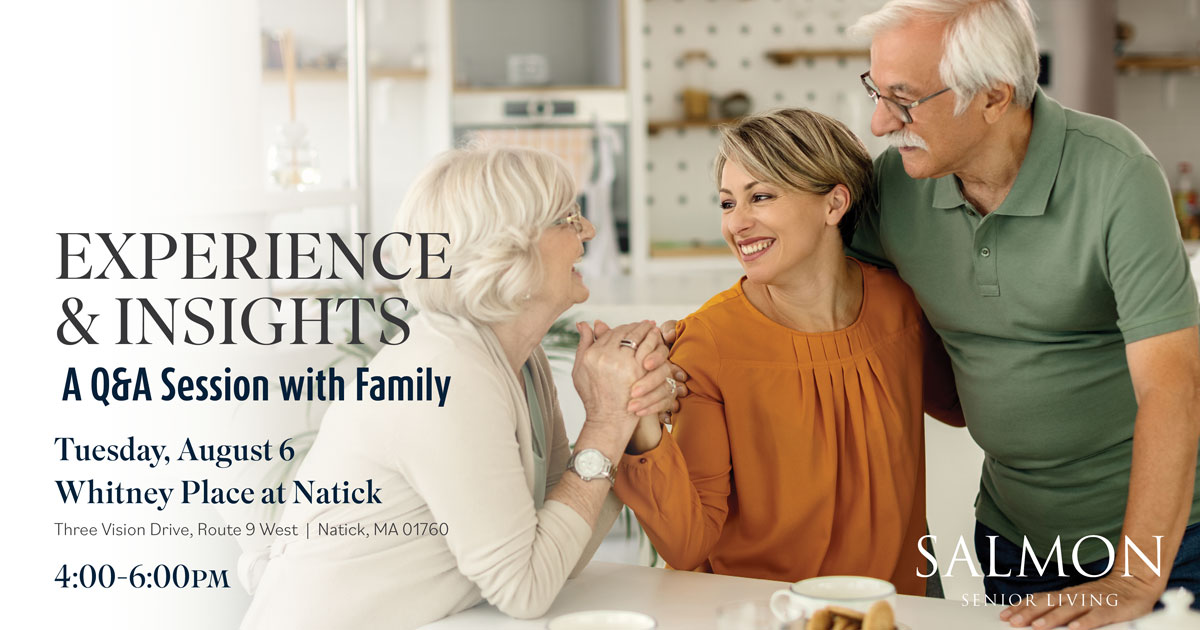Falls are the number one cause of injuries in older adults and can be a result of balance issues. Even a simple fall can result in a broken wrist or arm, a hip fracture, or serious head and brain injuries. According to the CDC, one out of three seniors will suffer a fall this year, but fewer than half of them will talk with their doctors about it. This is why balance and fall prevention go hand in hand. Even if a fall doesn’t result in serious injury, many older adults may avoid certain activities after a fall because they’re afraid of falling again. Rather than miss out on your favorite activities, take these tips and improve balance for a fall-free life!
Exercises to Improve Your Balance
Regular exercise will strengthen muscles, improve balance, boost endurance, and increase overall flexibility, preventing future falls. We’ve listed seven exercises that can be done almost anywhere, which can help improve your balance. Be sure you have something to hold on to when you begin. As you get more proficient, you can let go and balance without support. Move slowly and easily and don’t forget to breathe!
- To improve balance, practice balancing on one foot while holding on to the back of a chair, or kitchen counter.
- To improve strength, sit down and stand up without using your hands.
- To strengthen your calves and ankles, hold on to a counter or the back of a chair, lift your heels so you’re standing on the balls of your feet, and then slowly lower your heels back to the floor. Keep your back straight and your knees slightly bent.
- To strengthen your lower back muscles and buttocks, hold on to a counter or the back of a chair, kick one leg straight back, bend your knee to bring your heel to your buttocks, and then slowly lower your foot and your leg, back to standing. Repeat with the other leg. Keep your back straight and your opposite knee slightly bent.
- To strengthen thigh muscles, sit in a straight-back chair with your feet flat on the floor, straighten one knee, lift the leg, and then slowly lower it back down. Repeat with the other leg.
- To stretch the back of your leg, sit in a straight-back chair with your feet flat on the floor, straighten one knee and lift your leg, place the foot on a short stool and reach to touch the foot. Hold for about 10-20 seconds. Repeat with the other foot.
- To improve balance, stand on one foot and walk heel-toe in a straight line with one foot in front of the other.
Repeat each of these moves ten times, two or three times a week. Check with your doctor before starting an exercise program to be sure these are right for you.
Other Balance-Improving Activities for Fall Prevention
- Walking is a great way to increase balance, improve strength, and increase endurance.
- Tai Chi is a gentle, yet effective exercise that can help adults to develop and improve balance.
- Pool exercises can also help improve balance and strength. Check out your local YM/YWCA for Tai Chi and swim exercise classes.
Create a Safe Living Space to Prevent Falls
While exercising to improve balance can go a long way toward helping to prevent falls, it is equally important to ensure your living space is a safe space.
- Clear out clutter. Keep the home neat and tidy, removing clutter, including old newspapers and magazines, especially from hallways and stairs. Tie up long electrical cords.
- Remove or repair tripping dangers. Check each room in the home for loose carpets, throw rugs, floorboards, or tiles that stick up.
- Increase lighting. Install brighter light bulbs, especially in hallways and over stairs. Add nightlights in bedrooms and bathrooms.
- Install non-slip mats. To prevent falls on wet or slick surfaces, install non-slip mats in bathtubs, showers, and on kitchen, bathroom, and porch floors.
- Install grab bars and handrails. Grab bars by toilets and bathtubs, and handrails in stairways and hallways are vital in helping to prevent falls.
- Avoid loose clothing. Baggy clothes can catch on furniture; clothing that drags can cause you to trip. Be comfortable but keep safety in mind.
- Wear rubber-soled, low-heeled shoes. Wearing slippers with smooth soles or ordinary socks at home can be unsafe; wear non-slip socks with grips on the soles to prevent slipping on flooring.
- Take your time and move slowly and carefully. Moving too quickly from a sitting to a standing position (and vice-versa) can cause light-headedness or may cause you to get tangled up in your own feet. Pause before using the railing on the stairs, whether going up or down.
Extra Balance and Fall Prevention Tips
- Have your eyes and hearing tested often. Always wear your glasses and hearing aids.
- Ask your doctor about any side effects of any medicine you are taking. Tell your doctor if any drug makes you sleepy or dizzy.
- Get enough sleep. If you are tired, you increase the likelihood of falling.
- Limit alcohol consumption, as even a small amount can affect balance and reflexes.
More than One-Third of Older Americans Suffer Falls…
Each year, more than two million seniors visit a hospital emergency room because of a fall-related injury. However, fear of falling need not keep you from exercising and being physically active. Increased balance and following fall prevention tips can help you stay active, maintain physical health, and avoid injury.
For more information, read the National Institute on Aging’s Prevent Falls and Fractures. For more tips on preventing falls at home, read Fall-Proofing Your Home.
Contact Us
SALMON Health and Retirement communities offer support groups and resources for caregivers and family members. To learn more about the options available to you and your loved ones, contact us today for more information.




